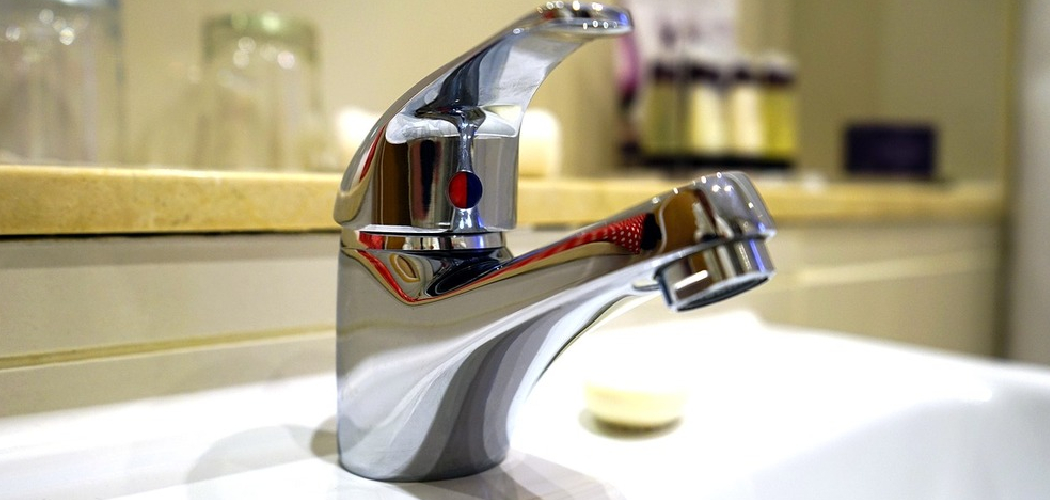Keeping chrome faucets clean and shiny is essential for maintaining their aesthetic appeal and functionality. Over time, water spots, soap scum, and grime can accumulate, making the faucet look dull and unattractive. Fortunately, with the right techniques and tools, you can easily restore the sparkle and keep your faucets looking like new. This guide will walk you through simple and effective steps of how to clean chrome faucets.
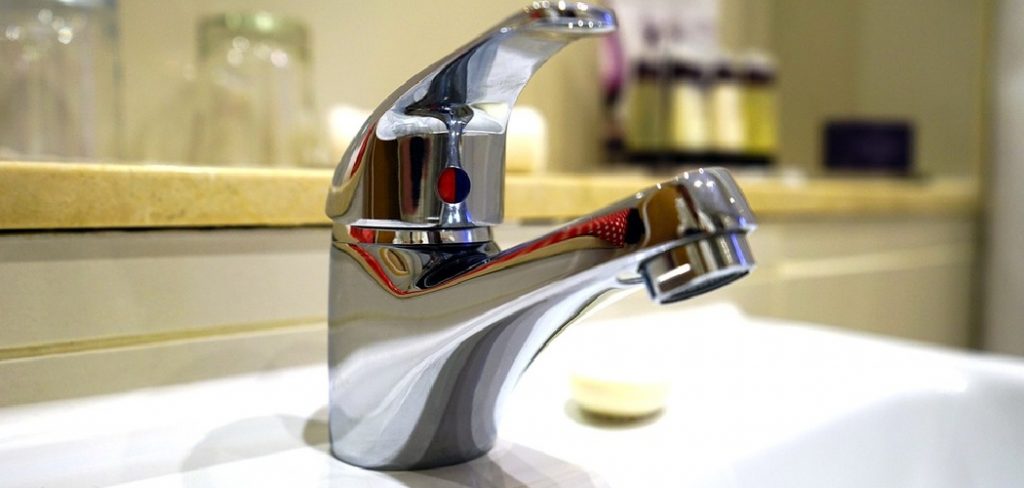
Why Cleaning Chrome Faucets is Important
Regularly cleaning chrome faucets is crucial not only for their visual appeal but also for their longevity. Chrome fixtures are prone to water spots, fingerprints, and mineral deposits, which can tarnish their polished surface over time. If left unattended, these accumulations can lead to corrosion, scratching, or dulling of the chrome finish, reducing the lifespan of the faucet.
Additionally, a clean faucet contributes to a more hygienic environment by removing bacteria and mold that may thrive in damp conditions. Taking the time to maintain your chrome faucets ensures they remain a gleaming focal point in your kitchen or bathroom while preventing costly repairs or replacements.
Benefits of Cleaning Chrome Faucets Regularly
Regularly cleaning chrome faucets offers numerous advantages that go beyond aesthetics. First and foremost, it helps maintain the shiny and sleek appearance that chrome is known for, keeping your fixtures looking new and attractive. Routine cleaning also prevents the buildup of limescale, soap scum, and water stains, which can be challenging to remove if left unchecked.
Additionally, by removing grime and preventing corrosion, you extend the lifespan of the faucet, saving money on replacements or repairs. Furthermore, regular cleaning contributes to a healthier home environment by reducing the presence of bacteria, mold, and other harmful microorganisms commonly found on damp surfaces.
Consistent upkeep ensures your chrome faucets remain both functional and visually appealing, enhancing the overall cleanliness and style of your space.
10 Methods How to Clean Chrome Faucets
1. Gather the Right Cleaning Supplies
Before you begin cleaning your chrome faucets, it’s important to gather all the necessary cleaning supplies. Common household items such as mild dish soap, white vinegar, baking soda, and a soft cloth or sponge will suffice for most cleaning tasks. For tougher stains, you may need specialized chrome cleaner or polish.
Additionally, a small soft-bristled brush (like an old toothbrush) can help with more stubborn grime in hard-to-reach areas. Avoid using abrasive materials like steel wool or harsh chemicals that could scratch or damage the chrome surface.
2. Turn Off the Water Supply and Dry the Faucet
Before starting the cleaning process, make sure the faucet is dry by wiping it down with a soft cloth or towel. Turning off the water supply isn’t strictly necessary, but it’s a good idea to prevent any excess water from splashing during the cleaning process.
Drying the faucet also ensures that cleaning solutions don’t get diluted or watered down and will work more effectively on the grime and mineral buildup. This step also allows you to inspect the faucet for any spots, stains, or areas that may need extra attention.
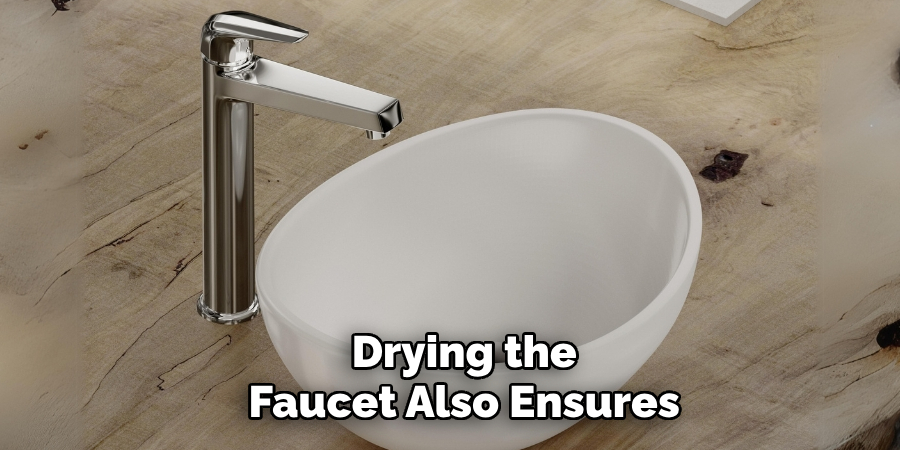
3. Clean With Mild Dish Soap and Warm Water
The most basic and safest method to clean chrome faucets is by using a mixture of mild dish soap and warm water. Fill a small bowl or container with warm water and add a few drops of dish soap. Using a soft cloth or sponge, dip it into the soapy water, wring out the excess, and gently scrub the faucet.
This solution is effective for removing light dirt, dust, and grime. Make sure to clean the faucet’s handle, spout, and base, as these areas tend to accumulate dust and fingerprints. Once finished, rinse the faucet with clean water and dry it with a soft towel to prevent water spots.
4. Use White Vinegar to Remove Mineral Deposits
One of the most common issues with chrome faucets is the buildup of mineral deposits, especially in areas with hard water. White vinegar is an excellent solution for dissolving these minerals without damaging the chrome. To clean your faucet, soak a soft cloth or towel in white vinegar and wrap it around the faucet, focusing on areas with visible mineral buildup.
Leave it to sit for about 15-20 minutes. The acidity of the vinegar will break down the mineral deposits, making it easier to wipe them away. Afterward, use a clean cloth to wipe off the vinegar and finish by drying the faucet.
5. Use Baking Soda for Stubborn Stains
For stubborn stains or spots that don’t respond to soap or vinegar, baking soda can be a helpful and gentle abrasive. To use baking soda, sprinkle a small amount directly onto a damp cloth or sponge, then rub it gently on the stained area of the faucet.
Baking soda’s mild abrasive properties help to lift grime and stains without scratching the chrome. Avoid using too much pressure when scrubbing, as this can damage the finish. After cleaning, rinse the faucet with water to remove the baking soda residue and dry it with a soft cloth.
6. Clean Hard-to-Reach Areas With a Toothbrush
Sometimes, dirt and grime accumulate in the hard-to-reach crevices and corners of your chrome faucet. A toothbrush with soft bristles is ideal for tackling these areas. Dip the toothbrush in a mild soap and water solution or white vinegar, and gently scrub around the faucet’s edges, handles, and spout where buildup often occurs.
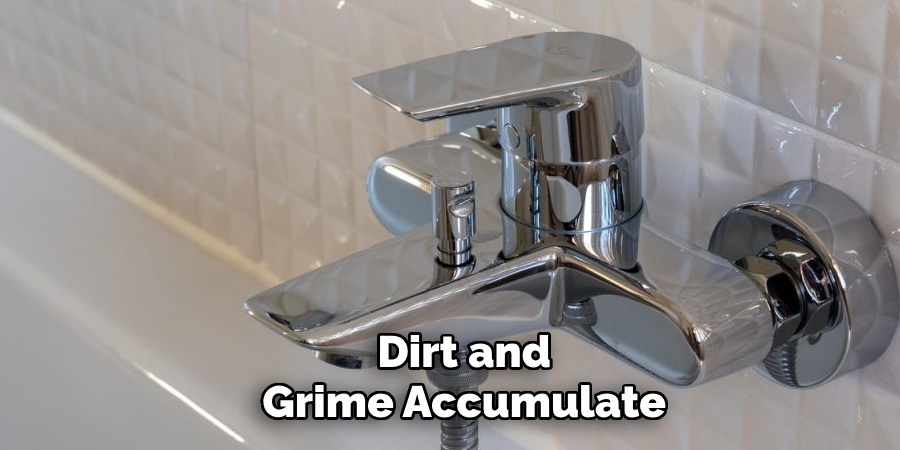
A toothbrush allows for more precision in cleaning these small areas, ensuring that no part of the faucet is left untouched. After cleaning, rinse with water and dry the faucet with a soft towel.
7. Polish With a Chrome-Specific Cleaner
If you want to restore the shine and luster of your chrome faucet, you can use a chrome-specific cleaner or polish. These products are specially formulated to remove tarnish, restore shine, and create a protective coating that prevents future buildup. Apply a small amount of the cleaner to a soft cloth and gently rub it onto the faucet, working in circular motions.
Follow the instructions on the product label for the best results. Once polished, buff the faucet with a clean, dry cloth to bring out its shine. Regular polishing can help maintain the faucet’s appearance and prevent long-term damage.
8. Try a Commercial Water Spot Remover
For faucets that suffer from frequent water spots, a commercial water spot remover can help address the issue more effectively. These products are designed to dissolve hard water spots without damaging the chrome finish.
Follow the manufacturer’s instructions carefully, as some products may require you to apply them with a cloth and leave them for a short period before wiping them off. It’s important to choose a product that is safe for use on chrome, as some removers may be too harsh and cause discoloration. After treatment, rinse the faucet thoroughly and dry it to prevent new spots from forming.
9. Maintain Regular Cleaning to Prevent Buildup
Regular cleaning is one of the most effective ways to maintain the cleanliness and appearance of your chrome faucet. By wiping down the faucet with a soft cloth after every use, you can prevent the accumulation of soap scum, water spots, and grime.
This doesn’t need to be a thorough cleaning every time, but a quick wipe-down can keep the faucet looking shiny and new. For households with hard water, consider using a water softener or installing a filter to reduce mineral buildup, which will help prevent frequent cleaning.
10. Avoid Harsh Chemicals and Abrasive Materials
When cleaning chrome faucets, it’s important to avoid using harsh chemicals, abrasive scrubbers, or steel wool. These materials can scratch or dull the chrome finish, leading to permanent damage. Instead, stick to gentle, non-abrasive cleaners such as mild dish soap, vinegar, and baking soda.
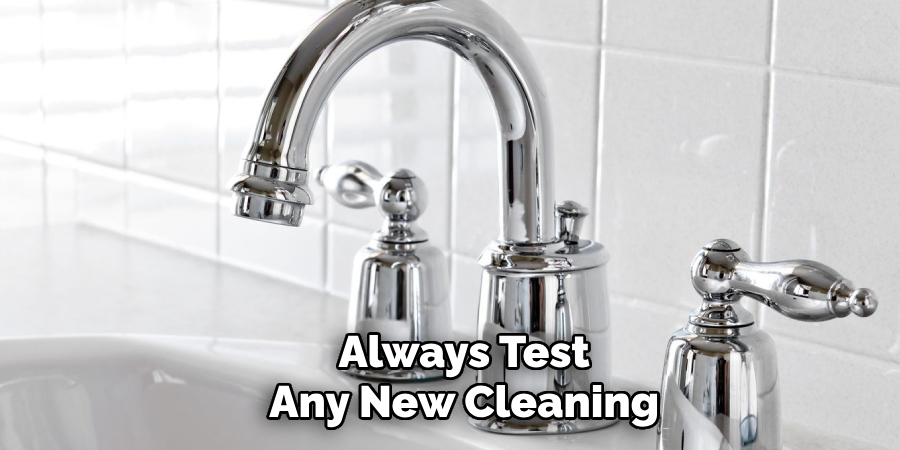
Always test any new cleaning product on a small, inconspicuous area of the faucet before using it on the entire surface. If in doubt, opt for products specifically designed for use on chrome surfaces to ensure that they won’t cause damage.
Maintenance and Upkeep
To keep chrome surfaces gleaming and in excellent condition, regular maintenance is key. Wipe down chrome fixtures with a soft, dry microfiber cloth after each use to prevent water spots and mineral buildup. Periodically polish the chrome with a specialized chrome cleaner or a mixture of vinegar and water to maintain its shine.
Avoid letting soap scum, hard water stains, or other residues accumulate, as they can dull the finish over time. Additionally, inspect the fixtures for any loose parts or damage, and address repairs promptly to prevent further issues. With consistent care, chrome surfaces can retain their original luster and durability for years to come.
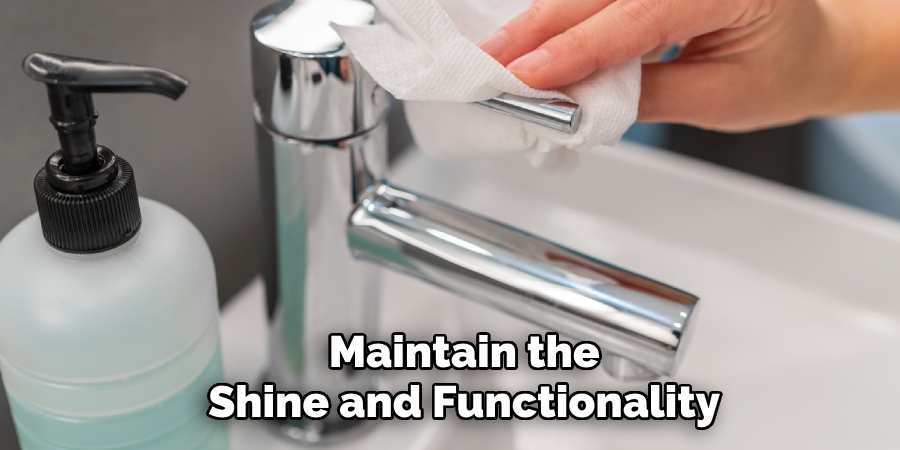
Conclusion
Cleaning chrome faucets doesn’t have to be a difficult or time-consuming task. By following these ten methods—ranging from using simple soap and water to employing vinegar, baking soda, and specialized chrome cleaners—you can maintain the shine and functionality of your faucets.
Regular cleaning, along with the use of the right cleaning agents, can help prevent mineral buildup, water spots, and grime, ensuring that your chrome faucets continue to look pristine and work effectively for years to come. So, there you have it – a quick and easy guide on how to clean chrome faucets.

